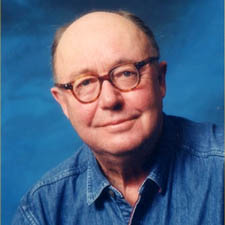This is an old revision of this page, as edited by VivaEmilyDavies (talk | contribs) at 06:11, 3 April 2005 (recat). The present address (URL) is a permanent link to this revision, which may differ significantly from the current revision.
Revision as of 06:11, 3 April 2005 by VivaEmilyDavies (talk | contribs) (recat)(diff) ← Previous revision | Latest revision (diff) | Newer revision → (diff)
Roger Michael Needham (February 9, 1935 - February 28, 2003) was a British computer scientist.
Needham began his undergraduate studies at the University of Cambridge in 1953, graduating with a B.A. in 1956. His Ph.D. thesis was on applications of digital computers to problems of classification. He became a highly respected scholar and worked on a variety of key computing projects in security, operating systems, computer architecture (capability systems) and local area networks.
Among his theoretical contributions is the development of the Burrows-Abadi-Needham logic for authentication, generally known as the BAN logic. His Needham-Schroeder (coinvented by Michael Schroeder) security protocol forms the basis of the Kerberos authentication and key exchange system. He also codesigned the TEA and XTEA encryption algorithms.
He joined Cambridge's Computer Laboratory, then called the Mathematical Laboratory, in 1962, became head of the lab in 1980 and remained there until his retirement in 1995. Needham set up Microsoft's UK-based Research Labs in 1997.
In 2001 he received a CBE for his contribution to computing. He was married to Karen Spärck Jones.
He died of cancer in February 2003 at his home in Coton, England.
See also
- Maurice Wilkes (colleague)
- David Wheeler (colleague)
External links
- Information about Roger Needham provided by his wife
- Obit: Roger Needham, The Register, March 2, 2003
- Roger Needham Dies, Business Weekly, March 3, 2003
- Head of Microsoft's European research laboratory dead at 68, San Francisco Chronicle, March 5, 2003
- Roger Needham, Computer Security Expert, Dies at 68, The New York Times, March 6, 2003
- Microsoft's Needham dies from cancer, The Seattle Times, March 6, 2003
- Speech presenting Needham with an honorary degree, Loughborough University, July 13, 2001